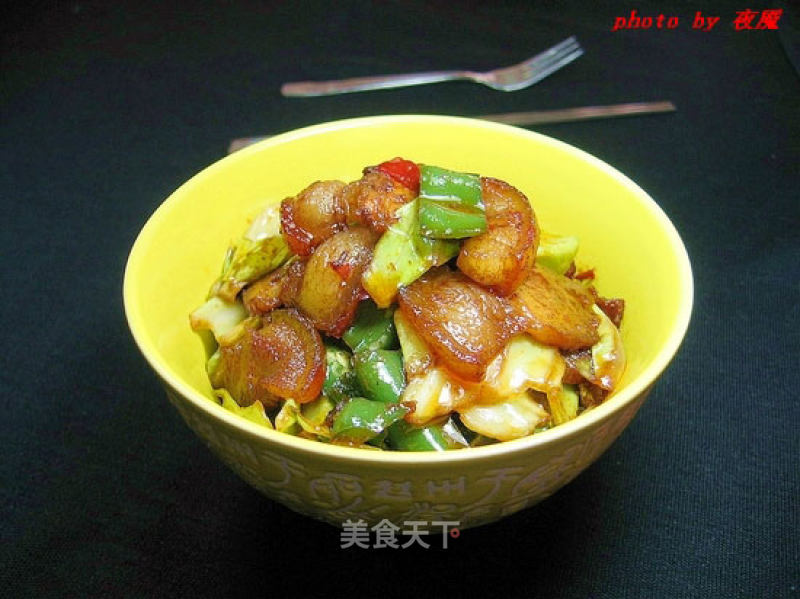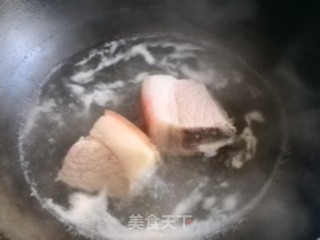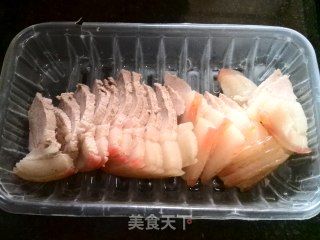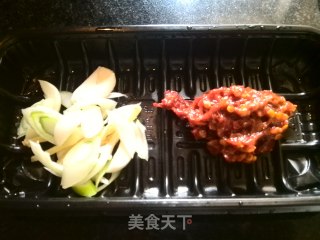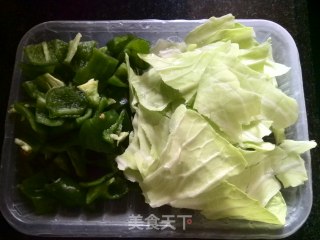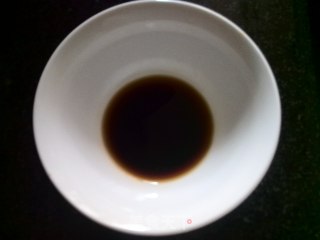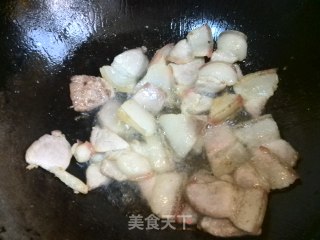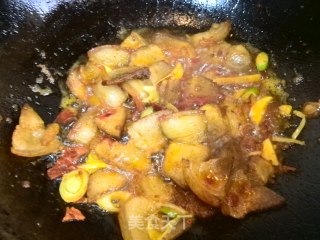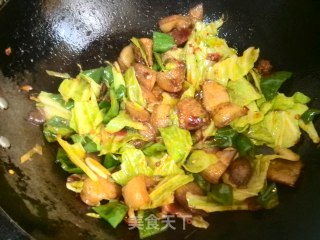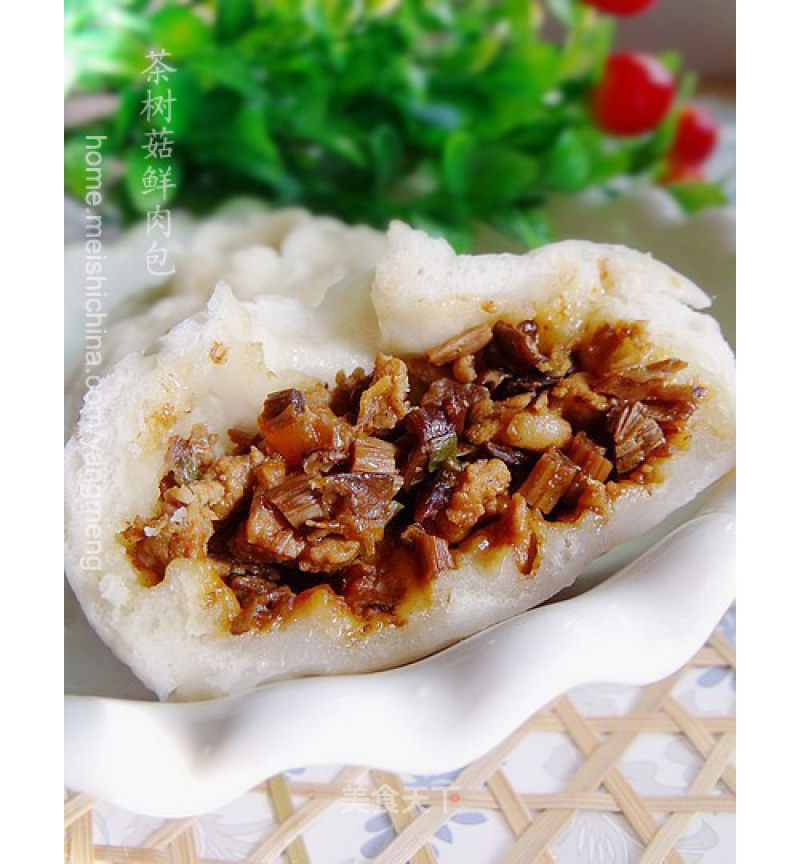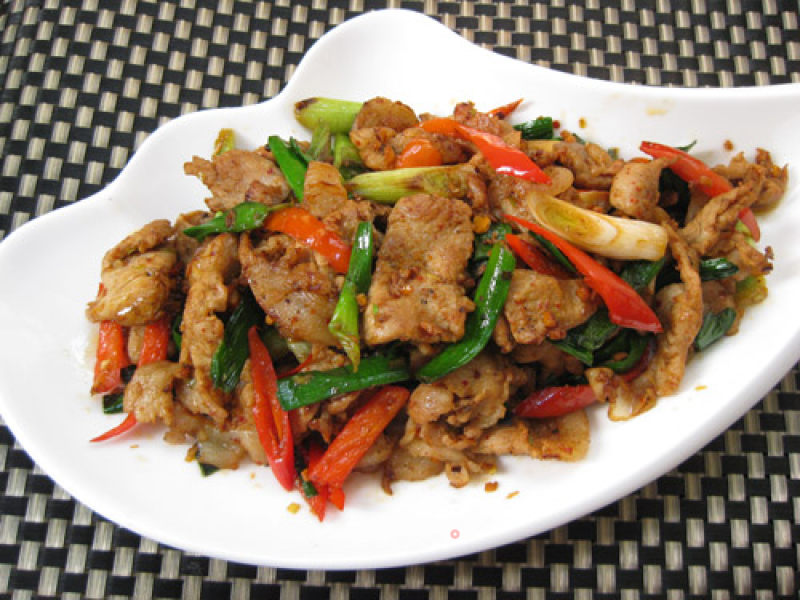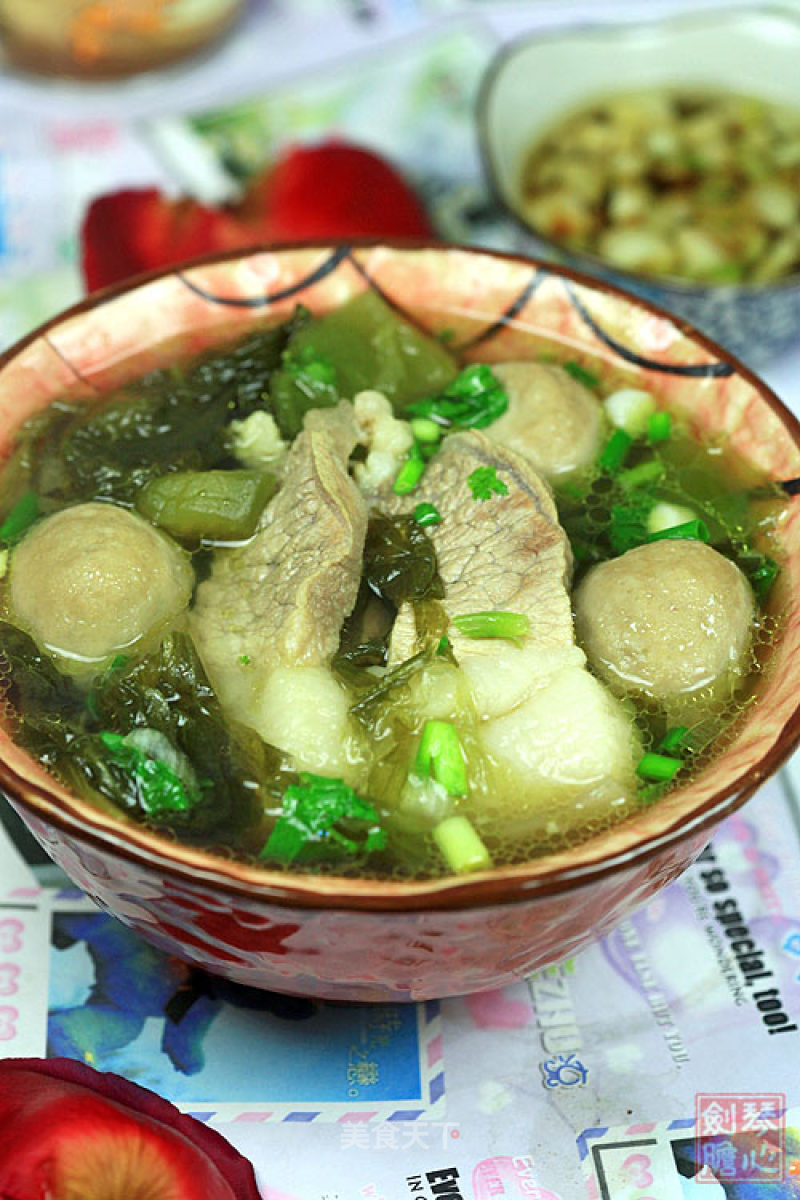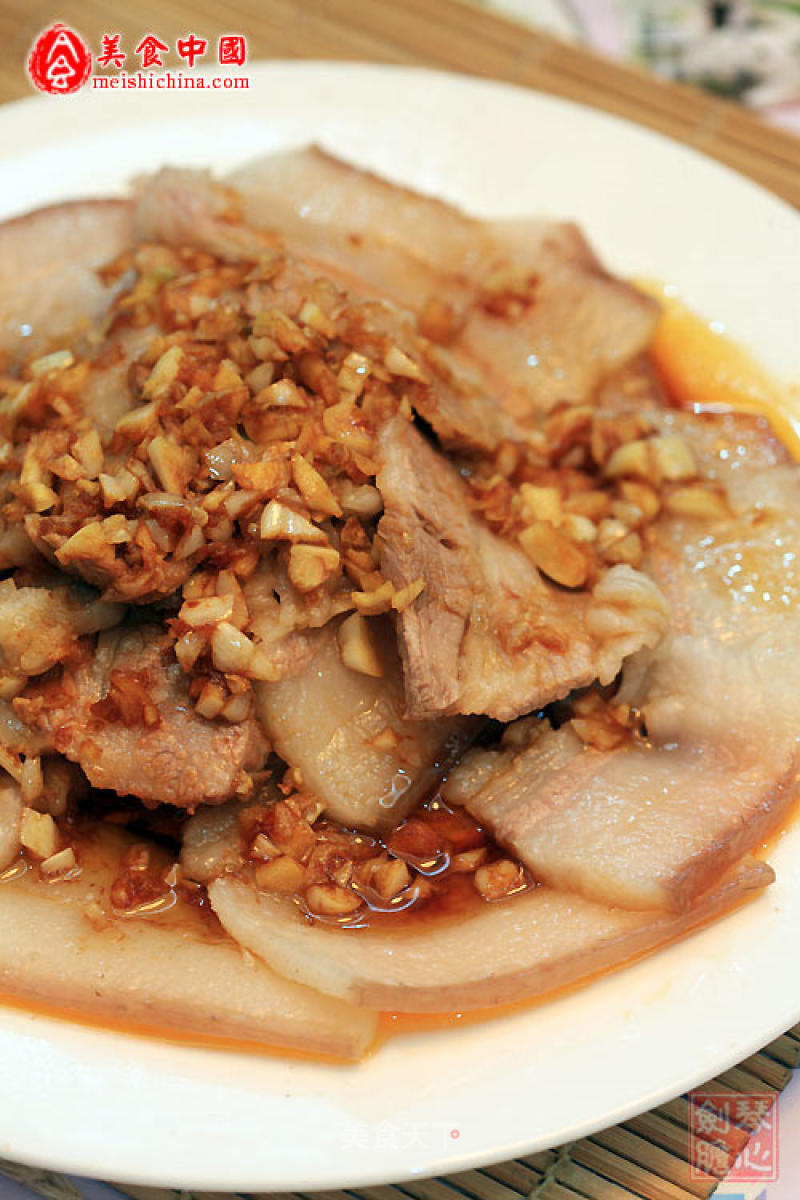Green Pepper Lotus White Twice-cooked Pork
by Night dire
Favorite
Difficulty
Normal
Time
30m
Serving
2
Although it's early spring, the night in Chongqing is getting colder and colder.
Tomorrow I will be busy in the studio for an afternoon. The reason why it is not a day is because I have to host the show in the morning. Before the broadcast, I would be very tired, but I took the time to post the twice-cooked pork that I made some time ago.
Cabbage is called Lianbai in Chongqing.
The meat used for twice-cooked pork can be pork belly or buttock.
There are many side dishes for twice-cooked pork, the most classic ones are garlic sprouts, onions and green peppers. You can also use garlic moss, dried tofu, carrots, and cabbage.
The procedure of twice-cooked pork is a little more complicated than salt-fried pork, with one more poaching procedure.
Another major difference between twice-cooked pork and salt-fried pork is that the salt-fried pork does not require the skin, and the second-cooked pork must retain the skin.
Tired to death, I wrote four sentences at the beginning of "twice-cooked meat" in one breath, and read them carefully, so tired.
For the twice-cooked pork made this time, the side dishes are green peppers and cabbage, and no Chinese peppers and dried chilies are used. "
Tomorrow I will be busy in the studio for an afternoon. The reason why it is not a day is because I have to host the show in the morning. Before the broadcast, I would be very tired, but I took the time to post the twice-cooked pork that I made some time ago.
Cabbage is called Lianbai in Chongqing.
The meat used for twice-cooked pork can be pork belly or buttock.
There are many side dishes for twice-cooked pork, the most classic ones are garlic sprouts, onions and green peppers. You can also use garlic moss, dried tofu, carrots, and cabbage.
The procedure of twice-cooked pork is a little more complicated than salt-fried pork, with one more poaching procedure.
Another major difference between twice-cooked pork and salt-fried pork is that the salt-fried pork does not require the skin, and the second-cooked pork must retain the skin.
Tired to death, I wrote four sentences at the beginning of "twice-cooked meat" in one breath, and read them carefully, so tired.
For the twice-cooked pork made this time, the side dishes are green peppers and cabbage, and no Chinese peppers and dried chilies are used. "

